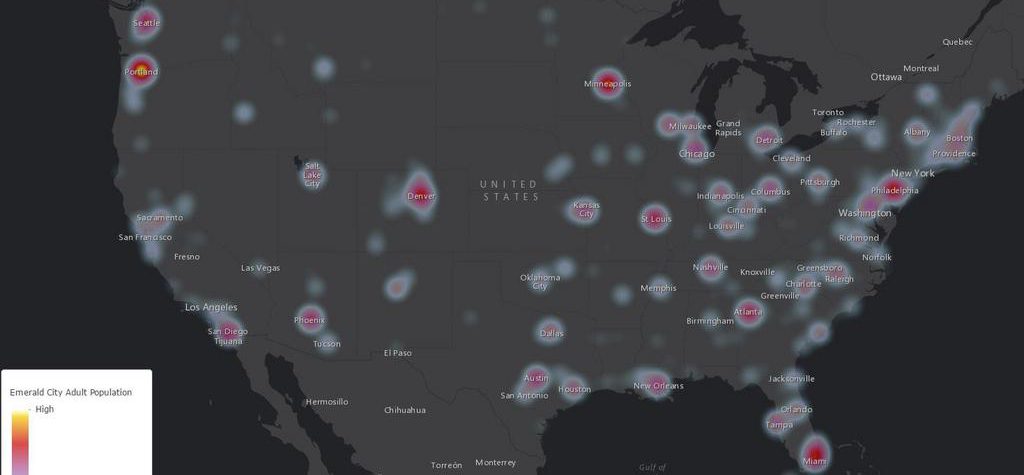-
Millennials are already impacting the consumer market in ways
I never imagined. Think about it, if I had approached you 10 years ago discussing the sharing economy and companies like Uber and Lyft, what would have been your response? Well, we are facing a new millennial-fueled shift, challenging traditional knowledge of the housing market.
Since 2005, I’ve watched as American households have increasingly sought rental options, with over 9 million new residents choosing to rent, the largest gain in the rental market since the 1960s. While many thought, it hit its peak during the 2008 financial crisis, it appears the trend will likely continue. Even though the Dow Jones Industrial Average has exceeded 21,000 and joblessness is under 5 percent, the number of rental properties is still increasing.
You may be asking yourself why.
Dispelling the myth of the millennial
There are many factors, but one prevailing trend is that a large percentage of millennials are now entering the workforce and starting families. Over 10 percent of the rental boom can be attributed to millennials, and less than half of the generation has yet to enter the workforce.
Although this generation is one of the most educated group in our country’s history, they are more likely to rent than own. It’s not that millennials are frivolously spending their hard-earned money, rather the cost of home ownership is growing faster than median salaries, preventing many millennials from purchasing a home. Also, this generation is the most indebted, with many students leaving university with tens-of-thousands of dollars in student loans.
With this debt in mind, an increasing number of young professionals are seeking affordable options that will still allow them to maintain a comfortable lifestyle after rent and student loan payments.
Multi-family housing development has increased sharply in the last five years. Behind the scenes though, there has been a subtler change. An increasing number of single-family homes are being rented out in older suburban neighborhoods at a much lower cost. As these young professionals flock to single-family rentals, they are changing the market potential for retailers.
Typically, the cost of renting in older suburban neighborhoods is substantially less than home ownership, averaging close to $1,030 a month. This lower cost to enter these rentals, mixed with the limited liability, means that millennials have money left over from rent and student loan payments to put into the local economy.
As this trend continues over the next decade, developers must seize the opportunity to establish a presence in the right area.
Who’s your neighbor?
Accurately modeling and predicting the impact of renters on an area is not as difficult as it first seems. Using geographic information systems (GIS), developers across the country are creating personas to effectively analyze and predict the behaviors of local consumers. This practical insight enables these professionals to understand their neighborhoods and make more profitable investments.
In growing neighborhoods across the country, young, tech-savvy investors are moving into single-family homes on the edge of the city limits. This particular group of young professionals can be found in the “Emerald City” segment in Esri’s Tapestry data, which combines demographics, socioeconomic indicators, and consumer behavior patterns to provide practical insight into a neighborhood’s residents.
There are nearly 1.7 million Emerald City households in the U.S. today, many of whom are millennials. Over half of these residents are renting in low-density neighborhoods. This segment typically spends more on items that they perceive to be higher quality. Emerald City millennials purchase organic foods and are more likely to get their groceries at stores like Trader Joes, Wholes Foods, and Clarks Nutrition. They are environmentally conscious and engage in healthier lifestyles.
What makes this segment so unique is that unlike the common perception of millennials living in downtown apartments, like the premise of TV shows like Friends, Emerald City segment is primarily found in older neighborhoods outside of major cities. Since many of these millennials are starting families, it appears that they aren’t going anywhere.
If you build it…
Professionals in both real estate and retail must challenge the common perception of the millennial, investing in projects that will meet future demands. Using geographic information system software like Business Analyst, developers can accurately map and forecast what suburban areas will have the highest growth rate of Emerald City millennials. By understanding this rapidly growing segment, developers and retailers can strategically position themselves to grow their businesses.
About author
-
-
About Author
Alan Bermudez
-
© 2017 iLookHomes. All rights reserved - Privacy Policy


leave a comment